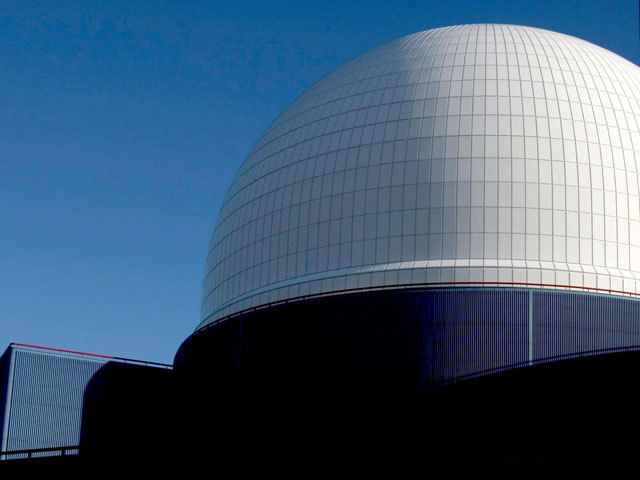
The cost of keeping uranium out of the hands of terrorists and safe from natural disasters is sidelining nuclear energy, which officials once dreamed would power a Utopian future of cheap, almost limitless electricity.
The amount of power produced by nuclear reactors has dropped to a 32-year low, the International Atomic Energy Agency will tell its 162 member states meeting in Vienna today. The agency will also present lower forecasts for future output as governments in developed nations seek other sources of power.
Even as a new generation of campaigners promote carbon- emission-free nuclear power as part of a strategy to tackle climate change, growth has stalled in Europe and North America while Japan’s reactor network, the world’s third biggest, remains idle following the 2011 tsunami that wrecked the Fukushima plant. Concerns that Iran, Syria, or even some terrorist group, might squirrel away fuel for bomb-making have pushed up the price of nuclear power in the rest of the world.
“Where electricity markets are liberalized, nuclear is finding that it cannot compete on cost,” said Edwin Lyman, a physicist at the Cambridge, Massachusetts-based Union of Concerned Scientists. “The biggest external cost of nuclear power stems from its potential to be misused for nuclear weapons.”
It’s all a far cry from the IAEA’s origins in the 1950s when it was set up following President Dwight D. Eisenhower’s appeal to the United Nations to promote the use of “Atoms for Peace.”
As engineers set their sights on the cosmos and the global economy reveled in the postwar economic boom, US Atomic Energy Commissioner Lewis Strauss, one of the driving forces behind the agency’s creation, forecast 60 years ago this month that nuclear energy would become “too cheap to meter.”
The IAEA doesn’t “pass judgment on the usefulness of nuclear power,” its director general, Yukiya Amano, said Sept. 15 when asked about Strauss’s forecast.
In 1954, it was Russia, not the US that was most concerned nuclear weapons would spread.
“Since even peaceful nuclear activities could lead to the production of materials usable for bombs, the proposed stimulation of such activities throughout the world could actually lead to an intensification of the arms race,” the Soviets wrote in a January 1954 letter to Washington.
Now Russia is the world’s top reactor exporter, with a 37% market share, according to Washington’s Center for Strategic and International Studies. The US has tried to lead the world in securing nuclear material from potential terrorists.
With the shifting tides of history, the IAEA’s role has had to evolve. The agency’s budget to secure and verify nuclear material is rising while programs supporting power generation have been cut. After debunking false claims about an alleged nuclear-weapons program in Iraq before the 2003 war, the agency is now embroiled in Iran’s weapons investigation, pushing up the cost of operations.
The IAEA’s Iran-inspection budget was boosted by more than half this year, to 19.5million euros ($23.8million), or more than 53,400 euros a day. The budget for engineering support to nuclear power producers fell 23%, to 1.8million euros, mirroring the decline in the industry’s prospects. The agency forecasts capacity may grow by as little as 8%by 2030.
Nuclear remains competitive compared with other low-carbon- emitting technologies in terms of its cost of production, according to OpenEI, a database supported by the US Department of Energy and the United Nations Environmental Program. And yet, as world leaders gather in New York tomorrow for the UN’s Climate Summit, IAEA officials won’t be present.
“The cost of nuclear power cannot only be measured in dollars,” according to Lyman, who has testified before Congress about issues of nuclear security and proliferation. “The kind of catastrophic accident that Strauss and his successors believed could never actually happen have taken a significant toll.”
Recommended for you
